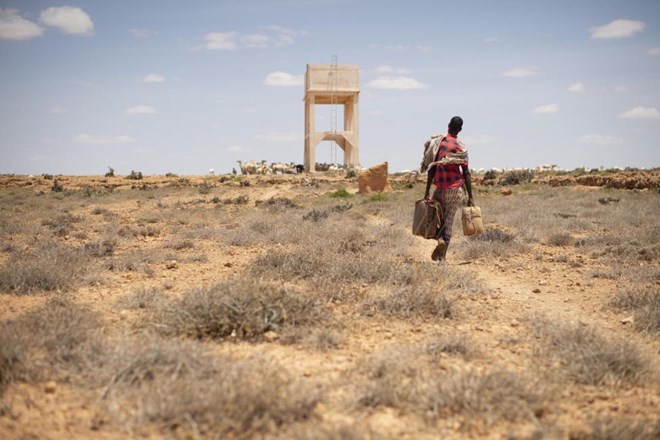Thousands of families affected by drought in Somalia are set to benefit from Qatar Charity’s food aid delivery, the organisation announced, as the United Nations warned of a worsening famine.
Some 7,000 people in Baidoa, South West States will be helped by the latest initiative, which includes a range of basic food items.
This comes as the United Nations warns of famine due to the tightening grip of drought in the East African country.
Last week, the UN warned that the likelihood of an ‘explosion of child deaths’ is both high and imminent in the Horn of Africa should the international community not take immediate action to prevent a new hunger disaster.
To further reiterate the horrific “continuing deep concern about emergency levels of malnutrition in Somalia and the wider Horn of Africa, UN Children’s Fund UNICEF reported meeting parents who had to bury their emaciated children by the roadside, as they trekked hundreds of kilometres to seek medical help” the global organisation said.
Somalia is facing a crumbling humanitarian situation due to an “unprecedented” and consecutive failed rainy season that has negatively impacted livestock and agriculture – two major sources of living int he country.
The worsening situation has led to the increase in the number of internally displaced people moving to big cities to save their lives.
Qatar Red Crescent Society provides reproductive health services in Somalia
Ibrahim Adam Ali, spokesperson for the South West State of Somalia, said that Qatar Charity’s aid came at the “right time,” as Baidoa hosts the largest proportion of those affected by drought after Mogadishu.
He also hailed Doha’s support for the Somali people and Qatar Charity’s interventions in the state.
Aid deliveries by Qatar Charity dating back to the start of the year included 21 projects in a series of fields, namely food supply, health, WASH, and shelter. Some 438,261 people have benefited from these projects across various Somali states.
Is famine man-made?
The horrific 2011-2012 famine that struck Somalia resulted in an unfortunate death toll that was estimated to reach some 258,000 people, half of whom were children.
Experts agree that famine is a man-made disaster that ‘can’ be prevented. The book “Famine in Somalia,” describes the 2011-2012 famine in Somalia as “largely human-made.”
“The attractiveness of drought as an explanation for hunger is that it removes culpability, allowing policymakers to attribute a humanitarian crisis to random climatic variation or an act of God,” William G. Moseley, director of the Food, Agriculture & Society Program at Macalester College said.
Separately, a 2016 report regarding the role of climate change and La Nina (a weather term referring to the periodic cooling of ocean surface temperatures across the tropical Pacific) in the ongoing Somalia drought by scientists at the World Weather Attribution initiative argued that “the effect of climate change on dry extremes in Somalia in the autumn rains is small compared to natural variability.
“We cannot show that climate change influenced the probability of drought,” the repot added.
Although Somalia possesses substantial resource endowment, it is still considered food insecure. Somalia boasts the longest coastline in Africa (3,300 kilometers, or 2,050 miles), in addition to marine resources, 8.5 million hectares of arable land and large deposits of “untapped oil reserves and minerals, reports detailed.
Searching for a new approach, experts suggest: “There is a need for a more proactive approach rather than traditional emergency responses. This ensures disaster is averted before it unfolds,” the report said.
For instance, the 2011-2012 famine in Somalia was “caused by a combination of factors, including a lack of government humanitarian strategy and delayed international humanitarian response.”
As it stands, rainfall in Somalia has failed for four seasons so far.

